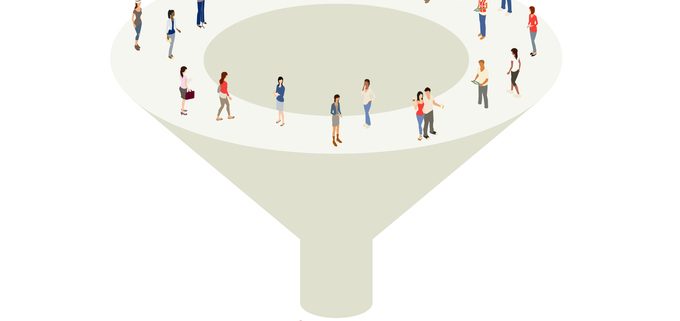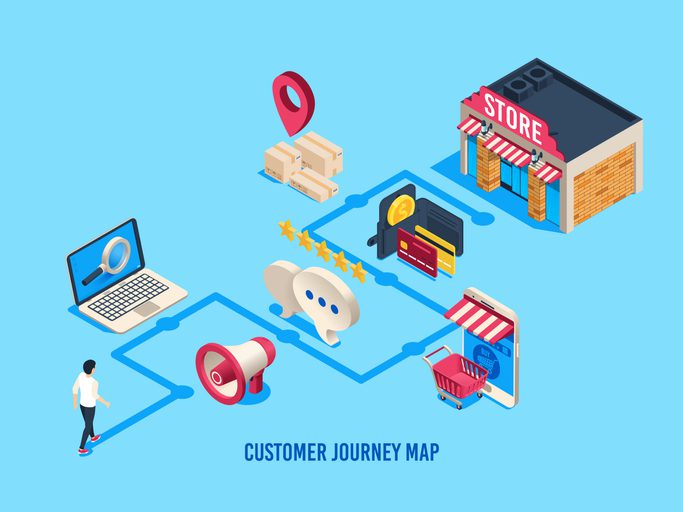
Customer Engagement Strategy
Building lasting customer relationships is one of the key challenges affecting most companies in today’s business landscape. Many are now investing more into their customer touchpoints by visualizing the customer journey, boosting customer satisfaction, and providing a seamless experience before and after purchase.
What is Customer Engagement Strategy?
A customer engagement strategy is a one kind of plan designed to encourage customers to repeatedly choose your product or service.
The ideal approach to customer engagement depends on several factors but should typically involve providing value, support, and resources. It also needs to make it easy for customers to do business with you by solving their problems quickly and efficiently.
The customer-centric aspect of your business should be felt all the way from marketing and sales to customer service. Your goal is to drive true engagement and encourage long-term loyalty that will eventually grow your customer base. Below are three customer engagement strategies that you can use to boost customer engagement.
Customer Engagement Strategies
1. Use Customer Feedback to Drive Improvements

The secret to being relevant in today’s customer-centric world is to give your customers what they want. But how can you give them what they want if you don’t understand their needs? First, you should know who your customers are and the problems you want to help them solve. That’s why you should prioritize their feedback throughout the customer touchpoints.
Some popular ways to engage with customers include conducting online surveys, engaging in social listening, making random but regular phone calls, participating in events and meet-ups, etc.. Regardless of where or how you seek customer feedback, ensure that the customers feel safe enough to be open and honest with you. That said, some feedback is just there to be observed, and you don’t need customers telling you what they want.
For instance, a high abandoned cart or bounce rate on the business website is one piece of feedback you can observe and then use your judgment to respond appropriately. In this case, for instance, the shipping cost may be high and needs to be lowered. Or your customers are forced to register before buying products, which complicates their overall site experience. A high bounce rate could also indicate a poorly designed website, unclear offers, or a poorly responsive/interactive site layout/theme.
By paying keen attention to your customers and their behaviors, you can learn a lot and find ways to boost their experiences. You can also request customer feedback to help you establish and develop your brand identity and to target your ideal market demographics.
2. Leverage Modern Technologies
Another way to enhance your customer experience strategy this New Year is to use modern technologies. These technologies don’t have to be complicated, they just have to make your business processes more efficient. For instance, adopting B2C/B2B marketing automation, such as chatbots, can guide site visitors and enrich their experience on your website.
The other technologies you might consider integrating into your overall business strategy to boost customer engagement include:
- Virtual and Augmented Reality. AR and VR are no longer the dreaded technologies they once were. Today, businesses embrace these technologies to enable visual and more refined customer journeys. If your products are compatible with most AR/VR apps, such as Google Lens, you’ll have appealed to a larger audience.
- Cloud. If migrating part or all of your customer-facing operations to the cloud sounds revolutionary, it’s because it actually is. The cloud offers several opportunities, from increased flexibility to rapid scaling capabilities. This will see you communicate and address customer issues across different channels from one central location.
- Data analytics. Data is one critical element that can greatly improve your business operations if used properly. You can use data analytics software to gauge customer behaviors and make high-level decisions that positively impact customer experience.
Also Read: Core Difference Between Buyer Journey vs. Customer Journey
3. Create a More Customer-Centric Culture
Most modern businesses emphasize customer-centricity and great company culture, but very few practice what they preach. In fact, only a few have fully integrated a customer-centric culture into their business operations. And it’s easy to see why this is the case.

According to a recent CMO Council report, only 14% of marketers say customer centricity is a crucial aspect of their businesses, and only 11% believe their customers would agree with that statement.
Changing the key aspects of your company culture to make it more customer-centric can be challenging. There would likely be a lot of resistance, even from the customers themselves, but it’s a crucial step to building a culture that truly puts the customer first. Some key steps you can take to create a customer-centric culture include:
- Sensitize everyone in your organization to understand and empathize with customers.
- Hire for customer orientation and customer experiences.
- Ensure employees have access to customer feedback and insights.
- Link employee culture to customer outcomes.
- Reward employees who focus on customers and provide great customer experiences.
Besides implementing the tips above, you should also make the customer experience everyone’s responsibility. You can further enhance your efforts by embracing the 4C marketing model focusing on the consumer, cost, communication, and convenience.
The goal is to facilitate direct interaction with customers and encourage employees to intervene directly and build long-lasting relationships with your customers.
Final Thoughts
Your customers deserve exceptional experiences when interacting with your products and services. One critical step to enhancing their experience is to understand their needs and commit to their growth journeys in ways your competitors can’t.
The goal is to amaze your customers and keep them coming back for repeat business. While there are many ways to accomplish this, some techniques are more sustainable and effective than others.
For example, it’s easy to use customer discounts to keep customers, but it may not be a sustainable strategy. On the other hand, implementing a customer-centric culture may take a longer time to yield results, but it is an ideal long-term customer engagement strategy..
As a business owner, you may need to combine various customer engagement strategies to build your unique ideal approach to customer engagement. The three customer engagement strategies we have highlighted above aren’t exhaustive, but they can guide you in developing a solid customer-focused business.



 At this stage, the consumer is close to buying your product. You’ll want to make it as easy for them as possible to make a
At this stage, the consumer is close to buying your product. You’ll want to make it as easy for them as possible to make a 
